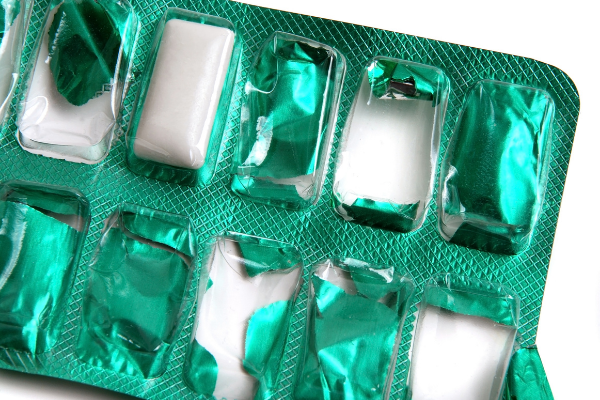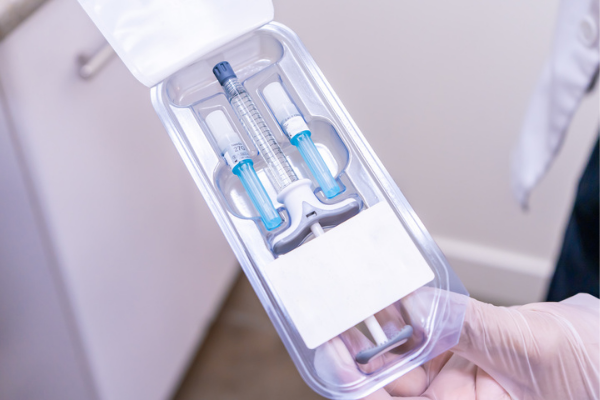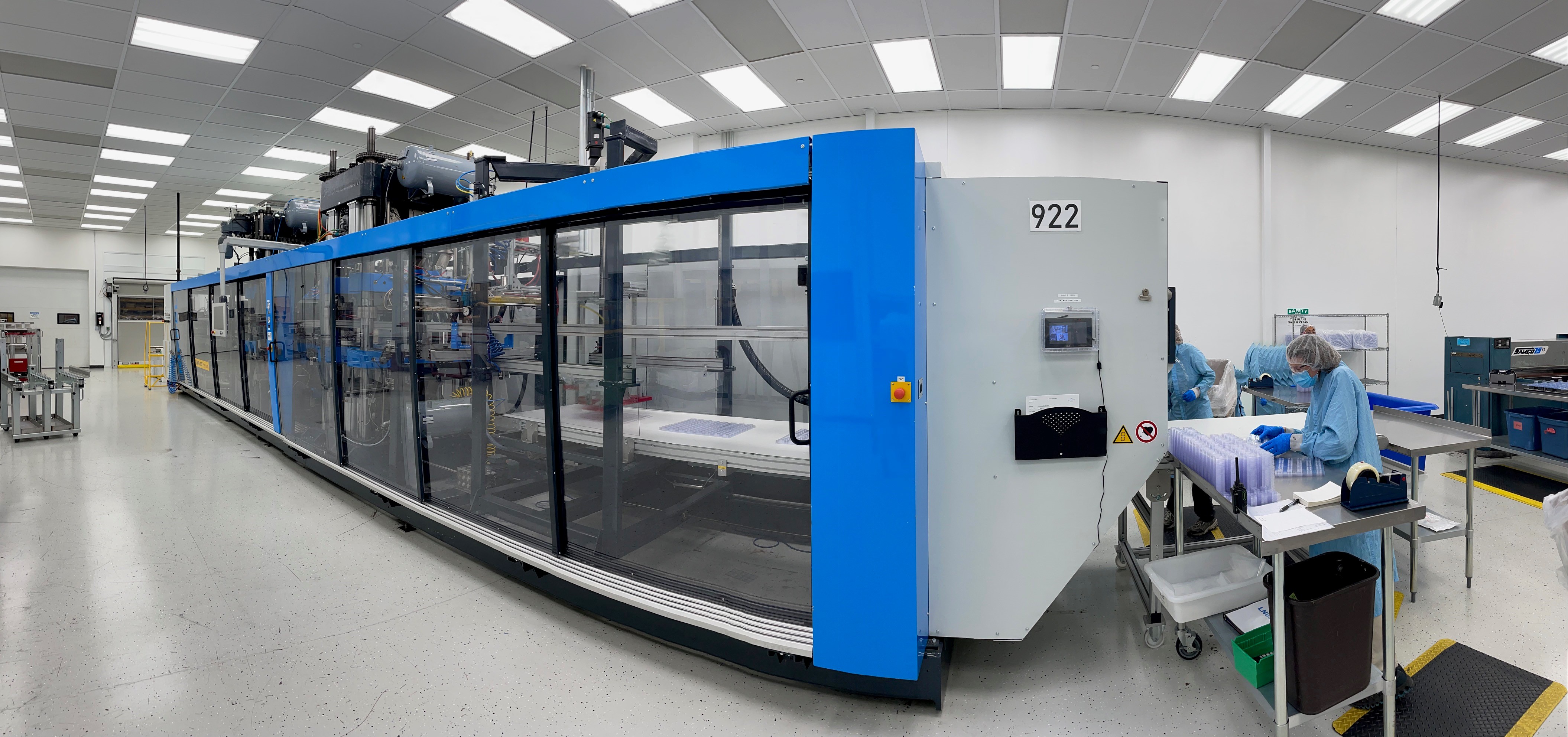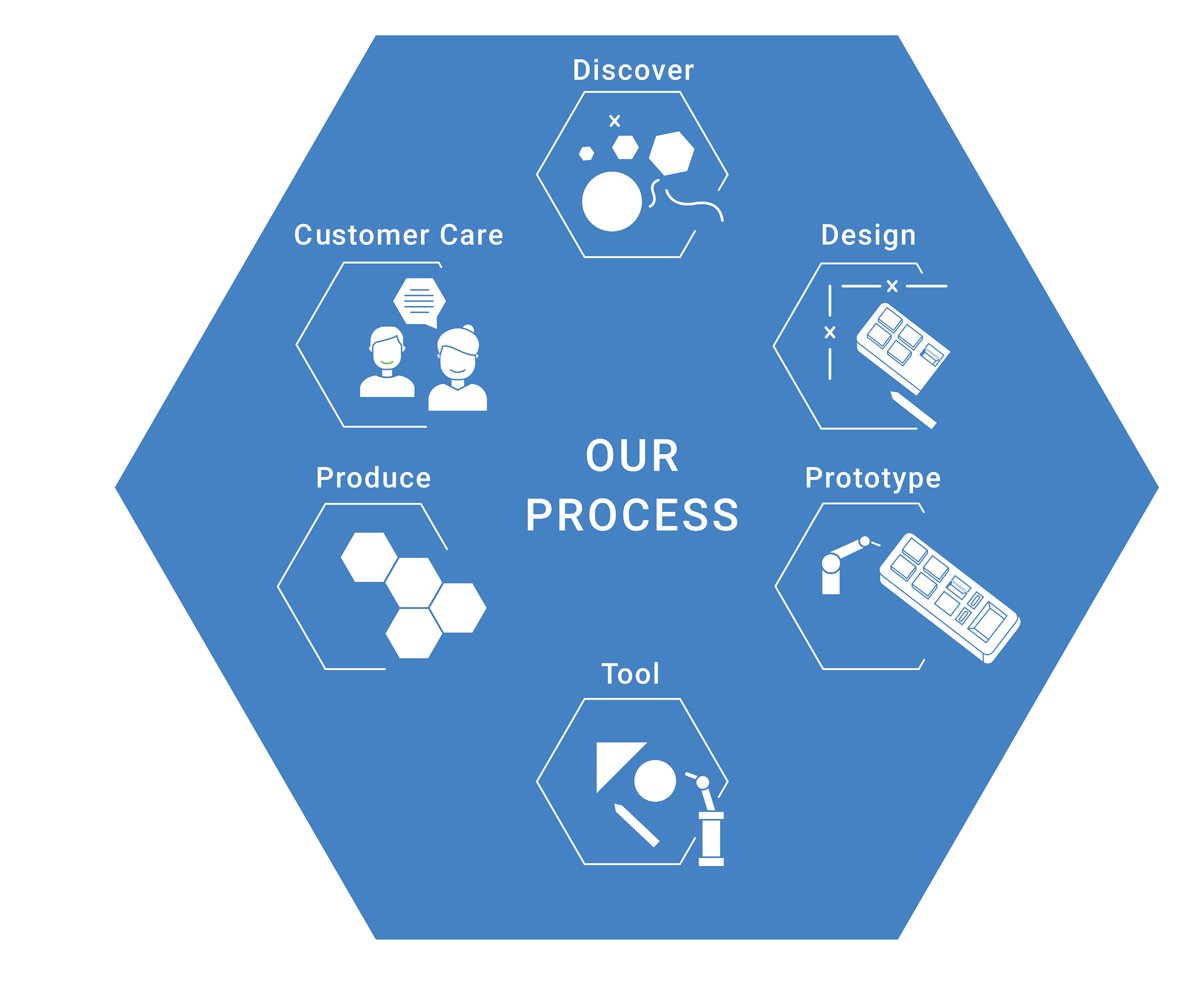Blister packaging is a common packaging format used for all sorts of products; most recognizable perhaps are small toys in retail or gum that pops out of small sheets. Thermoforming is almost always the best way to get this done; take a look at how it works.
What is Blister Packaging?
Blister packaging has two primary components: a plastic side with compartments (blisters), and a backer which gets sealed to it after the product is in place. The plastic portion is what gets thermoformed and holds the product; the backer secures the product, and can be made out of a number of materials, i.e. plastic, cardboard, Tyvek.

Plastic blister packaging is a cost-effective solution that is also earth-friendly when manufactured out of PET (polyethylene terephthalate) - virgin (recyclable) or re-processed (RPET; also recyclable). The thickness of the material can be optimized to simultaneously support the product protection requirements and minimize your footprint, going as thin as .0075" in thickness.
When it comes to medical blister packaging, a lid (or backer) made of Tyvek is the most common choice in order to withstand any required sterilization processes. Let's actually back up a bit and talk specifics about medical blister packaging.
Medical Blister Packaging
While still a blister package, medical applications are often referred to as blister trays or even more generically as sterile barrier packaging. This is because the design and materials must include the properties to support unique sterility requirements. Each package will have unique requirements, but here are a few common elements:
- Material: generally, medical blister trays are made using thicker plastic (0.020" - 0.040"), providing rigidity and strength to support a medical device. PET is the most widely used plastic for thermoformed medical packaging applications. PVC is an option for consideration as well. All that said, material selection is largely dependent on the package design and size.
- Lidding Material: needs to be made of a porous material to support sterilization processes, if required. Tyvek, as noted above, plus medical paper and foil, are standard options in the industry. Depending on the device, lids can have a peel feature that provides quick and safe access.
- Manufacturing: requires production in a clean room environment.
Blister style packaging is a great option for medical devices for many reasons, one of the top being cost-friendliness. In a budget effective way, medical blister trays can provide protection, visibility, sterility, and more to meet all defined packaging requirements.

Medical Blister Tray Production
After package design and material selection, production can begin based on those defined parameters. Thermoforming is almost always how blister trays and packages get made. It's an end-to-end process for forming the plastic portion of the package perfectly, every time. For most medical trays, this end-to-end process happens in a clean room. Below is an example.
The chosen material and product tooling is brought safely into the clean room and loaded onto the thermoformer; in our case it's a Kiefel KMD 90, a state-of-the-art piece of equipment with a high degree of automation and precision steel rule cutting. As the material is fed into the machine, it's heated up to forming temperature, then formed over the aluminum tool, cut to size, and stacked appropriately. Manual quality checks and packaging into shipment ready boxes complete the process.
Note: Thermoforming speed enhanced for video length purposes.
Here you see a blister tray thermoformed out of 0.010" PET, featuring multiple perforations for both packaging and future individual use after product has been sealed into the final package. After forming an 80-count cavity section, the Kiefel's superior cutting station punches out the intermediary tray size, and stacks them five high to prepare for final packaging. They are manually split along perforated lines into their final 10-count tray size, stacked, and boxed up for final shipment.
Blister Tray on the Kiefel KMD 90
The specific blister tray manufactured above is being produced on the Kiefel KMD 90, a superior in-line thermoformer, in a Class 8 Clean Room. The thin gauge material used, plus trim requirements (+/- .02) specified on this tray made it a great fit for the Kiefel.

Most medical packaging we manufacture goes on our Kiefel. In addition to the specs noted above, the Kiefel is also efficient for smaller volume projects, with optimized cycle times and incredible trim precision. This quality and automation make it one of our preferred processes for medical packaging production; it's set up in one of our two clean rooms to support projects requiring a class 8 clean room production environment.
Medical Packaging & Production Process for Blister Trays
Blister trays follow the same design and development path as all custom thermoformed medical packaging. Starting with a package design, either from scratch or a drawing of any sort, it's created/reviewed/adjusted for manufacturability. Production requirements are defined in this stage (including material, gauge, color, etc.).
From here a prototype is created to validate form-fit-function based on the drawing and specifications. With an approved prototype, a production tool will be built, which is used to form your custom tray on the Kiefel, or another thermoformer. Then the first set of parts is manufactured for your final testing, validation, and approval. With all those t's crossed and i's dotted, your tray can move into production.

All that remains to get started is choosing a thermoform manufacturer to partner with on the design, development, and production work ahead. Choose wisely :)

